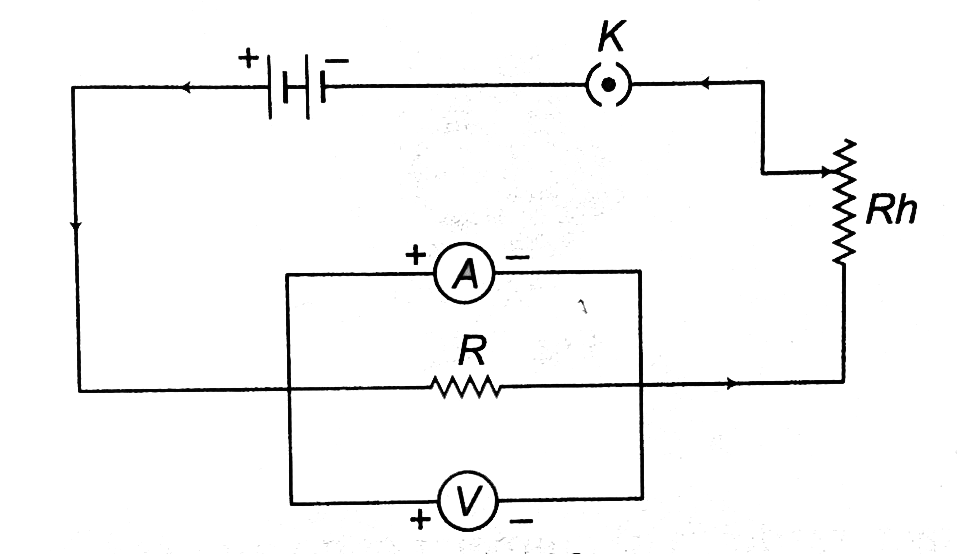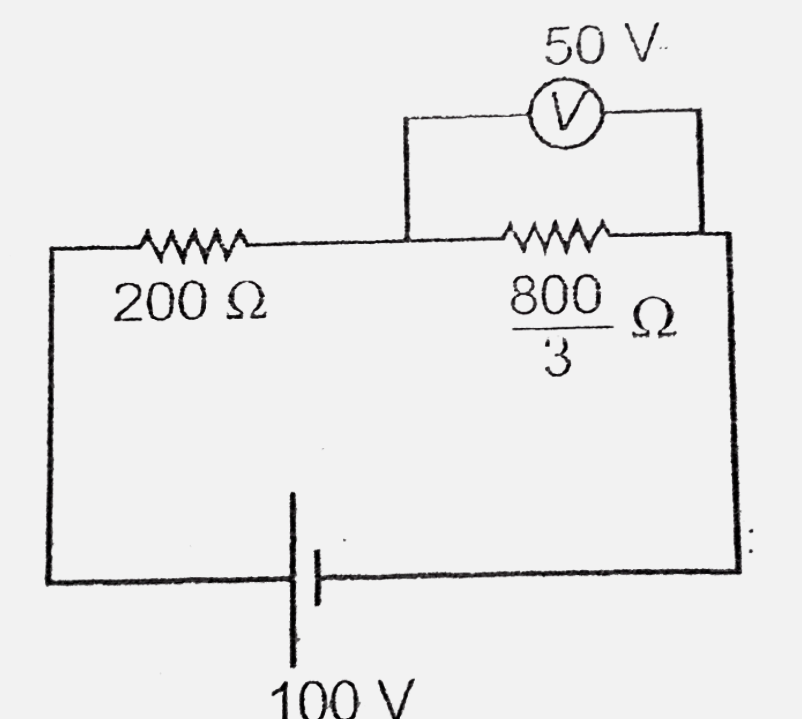What result do you expect in above experiment, if by mistake, voltmeter is connected in series with the resistance.
Step-by-Step Solution
1. Understanding the Setup: In the experiment, we have a resistor (R) and a voltmeter. Normally, the voltmeter should be connected in parallel with the resistor to measure the voltage across it.
2. Connecting the Voltmeter in Series: If the voltmeter is mistakenly connected in series with the resistor, the circuit configuration changes. The voltmeter, which has a very high internal resistance (let's denote it as R_v), is now part of the same circuit path as the resistor.
3. Analyzing the Circuit:
- When connected in series, the total resistance in the circuit becomes the sum of the resistor and the voltmeter's internal resistance:
Rtotal=R+Rv
- Since R_v is much larger than R, the total resistance becomes significantly high.
4. Current Flow in the Circuit:
- According to Ohm's Law, the current (I) flowing through the circuit can be calculated using:
I=VRtotal
- Given that Rtotal is very large, the current (I) flowing through the circuit will be very small (almost negligible).
5. Voltage Measurement:
- The voltmeter measures the voltage across the points it is connected to. However, since the current is negligible, the voltage drop across the resistor R will also be very small.
- Thus, the voltmeter will show a very low or near-zero reading, which does not accurately reflect the voltage across the resistor.
6. Conclusion:
- Connecting a voltmeter in series with a resistor leads to a situation where the current is so low that it becomes impossible to measure the voltage across the resistor accurately.
- This is why voltmeters are always connected in parallel to the component whose voltage is to be measured.
- When connected in series, the total resistance in the circuit becomes the sum of the resistor and the voltmeter's internal resistance:
Rtotal=R+Rv
- Since R_v is much larger than R, the total resistance becomes significantly high.
- According to Ohm's Law, the current (I) flowing through the circuit can be calculated using:
I=VRtotal
- Given that Rtotal is very large, the current (I) flowing through the circuit will be very small (almost negligible).
- The voltmeter measures the voltage across the points it is connected to. However, since the current is negligible, the voltage drop across the resistor R will also be very small.
- Thus, the voltmeter will show a very low or near-zero reading, which does not accurately reflect the voltage across the resistor.
- Connecting a voltmeter in series with a resistor leads to a situation where the current is so low that it becomes impossible to measure the voltage across the resistor accurately.
- This is why voltmeters are always connected in parallel to the component whose voltage is to be measured.
Topper's Solved these Questions
- BOOK - DC PANDEY ENGLISHCHAPTER - EXPERIMENTSEXERCISE - Exercise 3.12videos
EXPERIMENTS
- BOOK - DC PANDEY ENGLISHCHAPTER - EXPERIMENTSEXERCISE - Exercise 3.22videos
EXPERIMENTS
- BOOK - DC PANDEY ENGLISHCHAPTER - ELECTROSTATICSEXERCISE - Integer17videos
ELECTROSTATICS
- BOOK - DC PANDEY ENGLISHCHAPTER - FLUID MECHANICSEXERCISE - Medical entranes gallery49videos
FLUID MECHANICS
Similar Questions
What result do you expect in above experiment if by mistake, ammeter is connected in parallel with voltmeter and resistance as shown in figure?
 .View Solution
.View SolutionAssertion : In metre bridge experiment, a high resistance is always connected in series with a galvanometer.
Reason : As resistance increases, current through the circuit increases,View SolutionAssertion : In metre bridge experiment, a high resistance is always connected in series with a galvanometer.
Reason : As resistance increases, current through the circuit increases,View Solution(A) : The resistance of voltmeter is very small as compared to the resistance of the galvanometer, from which it is obtained.
(R) : The voltmeter is connected in series to the conductor across which potential difference is to be measured.View SolutionA battery of electro motive force E is connected in series with a resistance R and a voltmeter. An ammeter is connected in parallel with the battery.
View SolutionWhich statement/statement is/are correct?
1. An ammeter is connected in series in a circuit and a voltmeter is connected in parallel.
2. An ammeter has a high resistance.
3. A voltmeter has a low resistance.View SolutionThere are n similar conductors each of resistance R . The resultant resistance comes out to be x when connected in parallel. If they are connected in series, the resistance comes out to be
View SolutionAssertion : If by mistake, a voltmeter is connected in series, then circuit will burn.
Reason : Current will drastically decrease in the circuit.View SolutionWhat is the resistance of voltmeter shown in the circuit ?
 View Solution
View SolutionIn an experiment for calibration of voltmeter, a standard cell of emf 1.5V is balanced at 300cm length of potentiometer wire. The P.D across a resistance in the circuit is balancedat 1.25m. If a voltmeter is connected across the same resistance. It reads 0.65V. The errorin the volt meter is
View Solution

